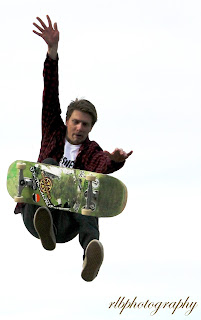For any photographer, light is the key. Late Fall doesn't offer much light on cloudy, rainy days, and our first goal is to determine what time holds the best light for a particular photo. Landscapes, street shots, and portraits all require specific light, and the December weather tells us that mid-morning and afternoon are prime spots to catch timeless images.
Both color and monochrome photography is alluring during these months. Color can be subjective and popping with energy, especially against a backdrop of gray skies and dreary landscapes. Black and white shots can show depth of contrast between say a gray sky and holiday shoppers on a crowded street.
The key is find contrast and lines. Architecture is a perfect example of this, but so is tall grass, flowers, raindrops on a car, etc...
Sunny days are of course great for any photographer, professional or hobbyist. But the same rules apply to sunny and cloudy days in Fall. The object of any shooter is to find interesting photos that tell a story. Look for the same contrast and detail. Find tension and lines that draw the viewer inside the photo. We want to viewer to say "Wow."
Here in the Pacific Northwest, humidity in Fall is mostly in the 90% area, and the weather while we are out photographing is often misty. This means that moisture can accumulate on the lens. Keep a constant eye on your gear and use microfiber cloth to keep lenses perpetually clean and clear. I even use lens hoods to keep water off the lens, especially in misting, showery weather.
On those days that are dark, looming gray skies and gloomy afternoons, use your camera's ISO to get faster shutters. I tend to use higher ISOs for black and white shots as well, as the grainy look sometimes portrays a certain grittiness about inclement weather and wide open settings. Street photography is a good example of this, as we often see the expressions that accompany fall and winter and the outdoors, whether it be a scene from downtown or a setting of nature.
Fall and even rainy winter days in Oregon's Willamette Valley, are photo opportunities. Use these ten tips to dial in bland days and capture dynamic images from those days. Remember, have fun!
Tip #1: The first thing to do when you are shooting outdoors in weather, is be prepared. Carry gloves in your bag as well as raingear. This includes gear for the camera gear. I have a few "rainsleeves," and I use my ballcap to cover the lens if I use a timer and a tripod. Rubber boots are a great idea if you are shooting in nature. An umbrella is great for around town. You get the idea.
Tip #2: Set your camera up as you leave the house. Meter ISOs until you find a range you are comfortable with. I usually start at ISO 800 for cloudy days.
Tip #3: Use fast prime lenses. A fast lens is a lens with an Aperture opening of f1.8 or faster. Some lenses are simply not fast enough. My macro lens, the Canon EFS 60mm f2.8, is just too slow. Use fast primes like a 50mm f1.4, this tactic will allow for faster shutter speeds and potentially deeper depths of field.
Tip #4: Framing photos is a very basic skill, and on our dreary and drab outdoor days, this fundamental skill can be the most important skill to have. Finding contrasting settings within these green-gray scenes will make photos pop with excitement. When metering a frame, use the viewfinder to examine all four sides of your shot. Do this obsessively.
Tip #5: Set the tone. Fall is color fading to the icy blue of winter. Capture those stories, a windblown tree that has but a few leaves left, a macro shot of dewdrops on one of those missing leaves...these are the scenes of Fall.
Tip #6: Faces. This is often a tip for any photography lesson. Faces are emotion. Find those candid scenes. Find the smiles and the scarves of people. Ask permission for photos if needed.
Tip #7: Look for light. A dark downtown street with streetlamp light hitting foot-traffic in misty, blustery weather, can tell a story and provoke a wow response from the viewer.
Tip #8: Know your sunrises and sunsets. The hours are getting shorter. Anticipate when and where the best light will be according to these times.
Tip #9: Keep a journal of places where great light hits at specific times. In Portland, Oregon, a particular and photogenic streetcorner gets lit up at a certain and recurring time. Know information such as this, and keep it in a place that you can refer to it.
Tip #10: Use a tripod and flash. Even with neat light, a flash can illuminate your subject and create a sense of closeness, regardless of the image tone. Exposing your subject is the key.
All photos COPYRIGHT Ronald Borst
Added 11-21-2016:






















No comments:
Post a Comment